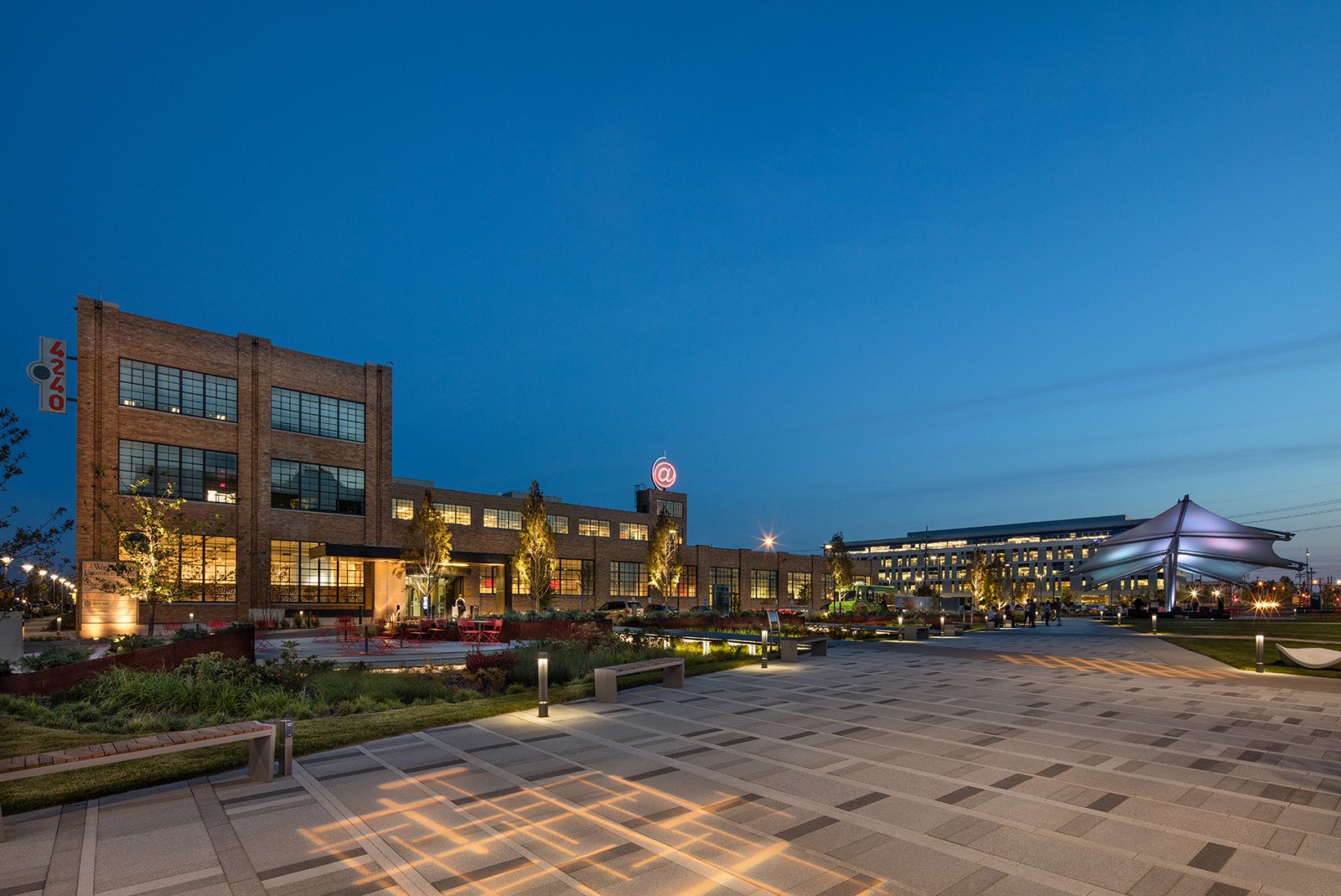Tim Gaidis and Eli Hoisington discuss some of the most successful U.S. innovation districts and the components that help these communities thrive.
Excerpted from Urban Land:
“Every innovation community should be powered to be unique and different,” said Tim Gaidis, senior project designer in the St. Louis office.
Innovation centers, also called innovation districts, are popping up all over and in various shapes and sizes, said Gaidis. “What an innovation community is not is a gathering just of physical space,” he continued. “Innovation communities are more than just buildings. They are strategically built around the idea that we are more than the sum of our parts, especially with access to the most important ingredient of all: a diverse community of big thinkers and risk takers.”
St. Louis’s Cortex (pictured above) is a successful example of an innovation community, he added. A tax-exempt 501(c)3, Cortex was formed in St. Louis in 2002 by Washington University, BJC Healthcare, St. Louis University, University of Missouri—St. Louis, and Missouri Botanical Garden to capture for the area the commercial benefits of university and regional corporate research.
“Cortex has amenities around it that support the companies—places where people can live, work, play, entertain—all the things you need today,” he explained. “It continues to grow. Private projects developed around Cortex in the last 24 months total $650 million.”
Doug Woodruff, West region executive and senior vice president of development at Wexford Knowledge Communities, which partners with universities, academic medical centers, and research institutions in the development of mixed-use knowledge communities, noted that over the past dozen years the firm has developed or has under development some 6.2 million square feet (576,000 sq m) of space with some 160 tenants involved in innovation. “These projects are like birthing an elephant and take four to five years to gestation. You have to have three things: patience, because these things don’t happen overnight; great partners; and the right environment. We love urbanity.”
Urbanity and cultural diversity are among the key components of today’s innovation centers, he added. “You have to provide the right amenities,” said Woodruff. “The old research parks—universities would buy a cornfield in Massachusetts and build the facility there—don’t work anymore because people want to be in a diverse and urban environment, so you better have a place for them to meet with other people,” he added.
Eli Hoisington, senior principal in the St. Louis office of HOK, notes that the design firm has been involved with Cortex since its inception and has branched out to other innovation areas including Discovery Square in Rochester, Minnesota, a 16-block subdistrict built in collaboration with Mayo Clinic in a highly connected urban life science hub.
“There are a lot of different ingredients of innovation centers, but one of the most important is to make it easy to interact with others,” Hoisington said. “You need to build active zones. Connections are opportunities, so long term you need to carefully think about design. Where do people meet, where do they interact?”
